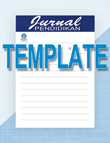SIMULATOR LANDING PESAWAT 737-300 USING MULTIMEDIA DEVELOPMENT LIFE CYCLE (MDLC)
Keywords:
Simulator, Aircraft Simulator, Landing Position, LandingAbstract
Simulator in the world of aviation are very helpful in learning to demonstrate a certain situation in order to help in learning something. The simulator can provide a clearer picture than the theory, because the simulator can demonstrate a situation as closely as possible. The airplane landing simulator is focused on understanding the landing phase, the manufacture of the Boeing 737-300 aircraft is made as close as possible to the original using aircraft blueprint as a reference for modeling the aircraft and moving the aircraft in this simulator using a joystick. Making the simulator using 3Ds Max software for modeling the aircraft, then Unity software for making animations and simulations. In this simulator there is a cockpit display that shows the instrument that serves to provide information on the state of the aircraft. The making of this simulator is expected to help in understanding the aircraft landing phase. In testing the operating system, this simulator can run on devices with the Windows 10 operating system with Intel Core i3, i5 and i7 processors. However, this simulator still needs additional information so that it can be used as a learning medium to understand the plane's landing phase in accordance with real conditions.References
N. Akbar, A., & Noviani, “antangan dan solusi dalam perkembangan teknologi pendidikan di Indonesia,” in Prosiding Seminar Nasional Program Pascasarjana Universitas Pgri Palembang, 2019, pp. 18–25. [Online]. Available: https://jurnal.univpgri-palembang.ac.id/index.php/Prosidingpps/article/view/2927
S. Miasari, R. S., Indar, C., Pratiwi, P., Purwoto, P., Salsabila, U. H., Amalia, U., & Romli, “Teknologi Pendidikan Sebagai Jembatan Reformasi Pembelajaran Di Indonesia Lebih Maju,” J. Manaj. Pendidik. Al Hadi, vol. 2, no. 1, pp. 53–61, 2022, [Online]. Available: https://ojs.uniska-bjm.ac.id/index.php/JMPD/article/view/6390/3551
T. R. Andjani, “Definisi dan Kawasan Teknologi Pembelajaran,” 2018, [Online]. Available: http://eprints.umsida.ac.id/3722/
and R. Anggraeny, Devie, Dina Aulia Nurlaili and A. Mufidah, ““Analisis Teknologi Pembelajaran Dalam Pendidikan Sekolah Dasar,” Fondatia, vol. 4, no. 1, pp. 150–157, 2020, doi: 10.36088/fondatia.v4i1.467.
& B. Aryanto, Salam., Retnowati, N. D., “Simulator Kendali Pesawat Terbang Extra 300 L Berbasis 3D Dengan Metode Simulation Game,” Compiler, vol. 3, no. 1, 2014, [Online]. Available: https://ejournals.itda.ac.id/index.php/compiler/article/view/69
B. D. Hidayat, A., & Adiputra, “Perancangan Game Flight simulator N219 yang Dikendalikan dengan Perangkat Smartphone Android melalui Media WiFi,” Compiler, vol. 4, no. 1, 2015.
S. Retnowati, N. D., Astuti, Y., & Ermanto, “Animasi 3D Pendukung Simulasi Fungsi Flight Controls Dan Landing Gears Supri Sukhoi Superjet 100,” in Conference SENATIK STT Adisutjipto Yogyakarta, pp. 93–107.
S. Syamsuar, “Analisis Data Uji Prestasi Terbang Field Performance pada pesawat udara CN235,” Warta Penelitian dan Perhubungan, pp. 337–343, 2019.
M. Saputra, A. D., Priyanto, S., Muthohar, I., & Bhinnety, “Pengkajian Tingkat Beban Kerja Mental Pilot Pesawat Terbang Dalam Melaksanakan Tahap Fase Terbang (Phase of Flight),” J. Tek. Sipil, vol. 13, no. 3, pp. 181–189, 2017.
A. Engineering., “Fase Penerbangan Pesawat Terbang,” aeroengineering.co.id, 2016. [Online]. Available: http://aeroengineering.co.id/2016/03/fase-penerbangan-pesawat-terbang/
N. A. Asfari, U., Setiawan, B., & Sani, “Pembuatan Aplikasi Tata Ruang Tiga Dimensi Gedung Serba Guna Menggunakan Teknologi Virtual Reality [Studi Kasus: Graha ITS Surabaya],” J. Tek. ITS, vol. 1, no. 1, pp. A540–A544, 2012.
W. Komputer, Mudah Membuat Game 3 Dimensi Menggunakan Unity 3D. Yogyakarta. Yogyakarta: Andi Offset, 2014.
A. Nasir, M., & Suheri, “Pembuatan Simulasi Tembak Reaksi Menggunakan Teknologi Virtual Reality,” Media J. Inform., vol. 8, no. 1, 2018, [Online]. Available: https://jurnal.unsur.ac.id/mjinformatika/article/view/141
M. Mustika, M., Sugara, E. P. A., & Pratiwi, “Pengembangan media pembelajaran interaktif dengan menggunakan metode multimedia Development Life Cycle,” J. Online Inform., vol. 2, no. 2, pp. 121–126, 2017, [Online]. Available: https://join.if.uinsgd.ac.id/index.php/join/article/view/v2i29
E. R. Melinda, M., Borman, R. I., & Susanto, “Rancang Bangun Sistem Informasi Publik Berbasis Web (Studi Kasus: Desa Durian Kecamatan Padang Cermin Kabupaten Pesawaran),” J. Tekno Kompak, vol. 11, no. 1, pp. 1–4, 2018, [Online]. Available: https://ejurnal.teknokrat.ac.id/index.php/teknokompak/article/view/63/50
A. B. Saputra, “Pembuatan Motion Graphic Sebagai Media Promosi Untuk Proyek Datsun Sigap,” KOPERTIP J. Ilm. Manaj. Inform. dan Komput., vol. 2, no. 2, pp. 84–97, 2018, [Online]. Available: http://jurnal.kopertipindonesia.or.id/index.php/kopertip/article/view/51/33
L. Subhiyakto, E. R., Astuti, Y. P., & Umaroh, “Perancangan User Interface Aplikasi Pemodelan Perangkat Lunak Menggunakan Metode User Centered Design,” KONSTELASI Konvergensi Teknol. dan Sist. Inf., vol. 1, no. 1, pp. 145–154, 2021, [Online]. Available: https://ojs.uajy.ac.id/index.php/konstelasi/article/view/4266
and A. H. L. L. Shidqi, V. Effendy, “Model User Interface Aplikasi Pembelajaran Doa-doa Harian Sesuai User Experience Anak Usia Dini Menggunakan Metode User Centered Design,” in eProceeding Eng, 2017, pp. 4866–4873.
S. Charntaweekhun, K., & Wangsiripitak, “Visual programming using flowchart,” in 2006 International Symposium on Communications and Information Technologies, 2006, pp. 1062–1065. [Online]. Available: https://ieeexplore.ieee.org/abstract/document/4141379
D. T. Hormansyah, D. S., Ririd, A. R. T. H., & Pribadi, “Implementasi Fsm (Finite State Machine) Pada Game Perjuangan Pangeran Diponegoro,” J. Inform. Polinema, vol. 4, no. 4, 2018, [Online]. Available: http://jip.polinema.ac.id/ojs3/index.php/jip/article/view/222/172
N. Febiharsa, D., Sudana, I. M., & Hudallah, “Uji fungsionalitas (blackbox testing) sistem informasi lembaga sertifikasi profesi (silsp) batik dengan appperfect web test dan uji pengguna,” Joined J. (Journal Informatics Educ., vol. 1, no. 2, pp. 117–126, 2018, [Online]. Available: https://www.e-journal.ivet.ac.id/index.php/jiptika/article/view/752/689







